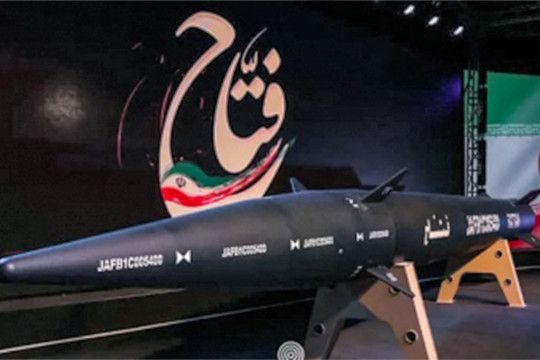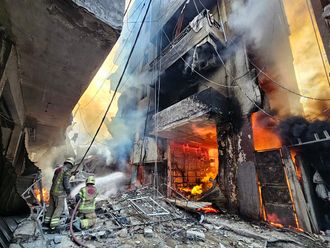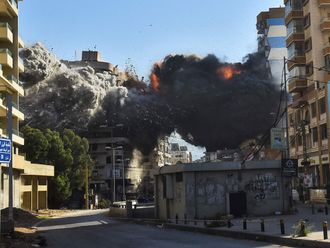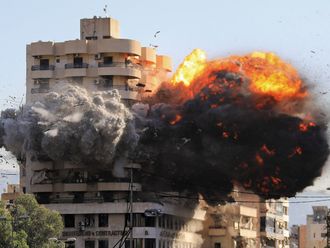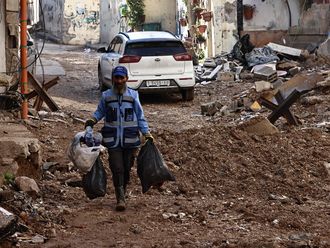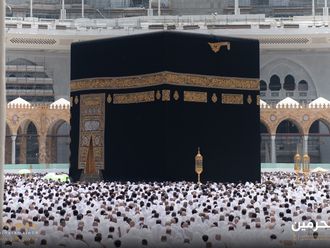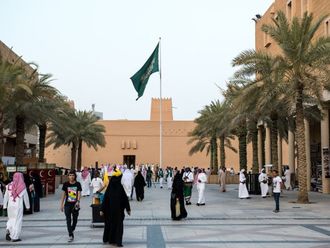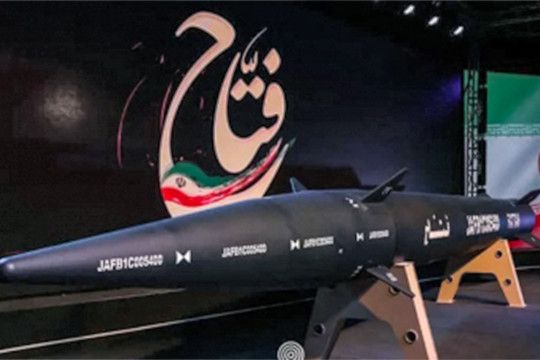
DUBAI: Iran presented what officials described as its first domestically-made hypersonic ballistic missile on Tuesday, the official IRNA news agency reported, an announcement likely to heighten Western concerns about Tehran’s missile capabilities.
Here are some facts about Iran’s missile programme, which is one of the biggest in the Middle East.
MILITARY CLOUT
Hypersonic missiles can fly at least five times faster than the speed of sound (Iran claims ‘Fattah’ can fly 15 times faster) and on a complex trajectory, which makes them difficult to intercept.
Iran says its ballistic missiles, with a range of up to 2,000km (1,200 miles), are an important deterrent and retaliatory force against the United States, Israel and other potential regional targets.
It denies seeking nuclear weapons.
Despite US and European opposition, the Islamic Republic has said it will further develop its defensive missile programme.
Concerns about Iran’s ballistic missiles contributed to then-US President Donald Trump’s decision in 2018 to ditch Tehran’s 2015 nuclear pact with six major powers.
According to the US Office of the Director of National Intelligence, Iran is armed with the largest number of ballistic missiles in the region.
The Arms Control Association, a Washington, DC-based non-governmental organisation says Iran’s missile programme is largely based on North Korean and Russian designs and has benefited from Chinese assistance.
The Arms Control Association says Iran’s short-range and medium-range ballistic missiles include Shahab-1, with an estimated range of 300km, the Zolfaghar (700km); Shahab-3 (800-1,000 km), Emad-1, a missile under development (up to 2,000 km) and Sejiil, under development (1,500-2,500km).
CRUISE MISSILES
Iran also has cruise missiles such as Kh-55, an air-launched nuclear-capable weapon (up to 3,000km), and the advanced anti-ship missile the Khalid Farzh, (about 300km) capable of carrying a 1,000kg warhead.
REGIONAL ATTACKS
Saudi Arabia and the United States have said they believe Iran was behind a drone and missile attack on Saudi Arabia’s prized oil facilities in 2019. Tehran denied the allegation.
In 2020, Iran launched missile attacks on US-led forces in Iraq, including the Al Asad air base, in retaliation for a US drone strike on an Iranian commander whose killing raised fears of a wider Middle East conflict.
More recently in 2022, Iran showed its prowess when it attacked Erbil in northern Iraq with a dozen ballistic missiles, an unprecedented assault on the capital of the autonomous Iraqi Kurdish region.
BACKING FOR YEMEN’S HOUTHIS
Yemen’s Iran-aligned Houthi movement has also shown a growing mastery of missile technology. The United States accuses Iran of arming the Houthis, a charge Tehran denies.
SUPPORT FOR HEZBOLLAH
The leader of Lebanon’s Iran-backed Hezbollah group has said the group has the ability within Lebanon to convert thousands of rockets into precision missiles and to produce drones.
Last year, Hassan Nasrallah said Hezbollah was able to transform standard rockets into precision missiles with the cooperation of “experts from the Islamic Republic of Iran”.
SYRIA
Iran has transferred indigenous precision-guided missiles to Syria to support President Bashar Al Assad’s fight against insurgents, according to Israeli and Western intelligence officials.
It has also moved some of its production capacity to underground compounds in Syria, where Assad’s military and other pro-Tehran forces have learned to build their own missiles, those same sources say.


